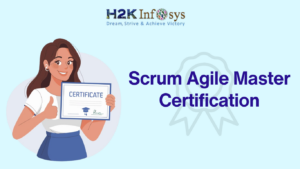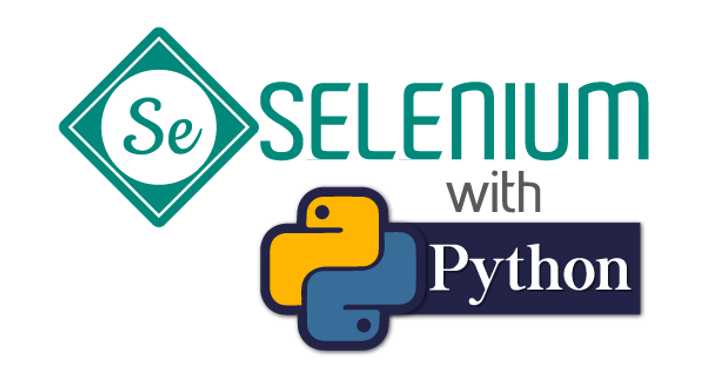If you are new to product/project development, agile and Scrum may sound strange. Sometimes, they are used individually, (as in Agile and Scrum) and sometimes, they are used together (as in Agile Scrum). But Agile and Scrum are actually the same? What does it mean to be an Agile project manager or a Scrum project manager? In this article, we will discuss what Agile and Scrum are, and attempt to help you understand your responsibility as an Agile product manager. By the way, if you want to become an Agile manager, a good starting point is to join an agile online training of good repute.
Let’s jump into it.
What is Agile?
Agile is a type of project methodology that focuses on continuous and iterate development of features, where solutions and requirements can evolve as per the present need. The continuous iteration is done through a holistic collaboration between project managers, developers, product owners, and other stakeholders.
Agile as a methodology strongly encourages teamwork, leadership, accountability, unambiguous communication, and the openness to accept new ideas. Since its inception in 2000, it has become a widely accepted methodology in the business world as its results are undeniable. The practice of Agile in an organization is widely accompanied by quick development and deployment of high-quality products that meet the requirements of the company as well as the needs of the end-users.
Agile development is always guided by development processes listed in the Agile Manifesto. The Agile Manifesto was developed by high-caliber profiles in the software industry, who brainstormed and came up with the best approaches for software development, as well as processes that do not work.
You may learn more about Agile by checking the articles here.
Now, let’s shift attention to Scrum.
What is Scrum?
Scrum can be seen as a type of Agile management that embraces a lightweight process framework. Let’s break down what this means.
By lightweight, we mean Scrum breaks development in small chunks. This helps to maximize productive time when working.
Process framework on the other hand refers to the processes that must be followed religiously in a methodology. The process framework for Scrum for instance includes Sprint, where processes are done in small cycles.
Scrum can be easily differentiated from other Agile methodologies based on the concepts and practices it adopts. These practices can be categorized into three:
- Roles
- Artifacts
- Time boxes.
Scrum is the most popular Agile methodology used as it helps to improve the team’s productive time and get things done faster. It works by splitting product requirements into a small time frame where development is done in an iterative and incremental manner. Furthermore, the process makes it possible for the team to adapt to new changes in the market. Since development is done in small chunks, it is easier to be flexible than when a major feature (that involves loads of processes) needs to be changed.
Here are some notable benefits of Agile Scrum methodology in an organization.
- Better adaptability to changes.
- Improved quality of deliverables
- Make better projects about delivery dates and time to spend on development
- Make better estimations about the state of work and project schedule.
What Makes Agile Special.
Agile is highly beneficial on many grounds.
- Benefits to Customers: Agile allows for a quick response to customers’ complaints and feedback. Since Agile development is done in stages, they can easily backtrack and make necessary changes without doing much work.
- Benefits to development teams: Agile gives the development team quick gratification. Everyone likes to see their work being used and appreciated. As the team releases small features, they see them being used, which can serve as an impetus to do even more.
- Benefits to product managers: As a product manager or product owner, your joy is to see the end users get unalloyed value from your product. This is exactly what Agile does by providing as many opportunities as possible to query released features and improve upon them for maximum value delivery.
- Project managers: As a project manager (i.e, you perform the Scrum operations), agile helps you track and plan deliverables effectively. You can use burn charts to visualize project progress on a daily basis and organize Daily Scrum meetings to stay abreast of the latest development. This better helps you know the current state of development and informs your decisions going forward.
Sounds like something you want to learn? Start today by joining a reputable online agile training. Now, let’s discuss the kind of roles you can fill after learning Agile.
Some Scrum roles you can fill.
By learning Scrum, you can fill three major roles:
- A Scrum Master
- The Product owner
- Be a member of the development team.
Let’s take some time to understand your activities in these roles.
Your responsibility as a Scrum Master
The primary responsibility of a Scrum Master is to keep the development process sane. You should ensure that there is no glitch in the process and any encumbrances that may affect productivity are taken off as soon as possible. On a daily basis, here are some of the things you’d do.
- Empower the development team to be better versions of themselves.
- Guide the product owner on the best way to maximize ROI and meet the product requirements.
- Improve the development of best practices.
- Inform the team on the progress of the development and the latest feedback from the product owner or end-users.
A Scrum Master is basically seen as the head of the development team and does all that is possible to ensure the team works as they should with tangible results to show for it.

Your responsibility as a Product Owner
The product owner simply manages the product requirement. They are the interface between the end-users and the development team. As a product owner, you will get feature requests and updates from many sources, scrutinize the request, and pass the ones that most satisfy your product requirement to the development team.
You will also help to define the technical requirement, requirement documentation, and the order of implementation. In addition, you will be managing the product backlog, i.e, feedback from previous sprints that needs to be treated.
Your responsibility as a Development Team Member
You will basically be doing the hands-on work which involves developing and testing the product. While you will work under the auspices of the Scrum Master, you have the prerogative of deciding how to perform the work. You will basically be working in a group of 5 to 10 people where you break tasks into smaller chunks and set delivery dates to two weeks intervals.
In conclusion
You have seen that Agile and Scrum are not exactly the same. Agile is a mindset while Scrum uses an Agile mindset to develop a practical project development methodology. You can become a Scrum Master by enrolling in online Agile training.




























